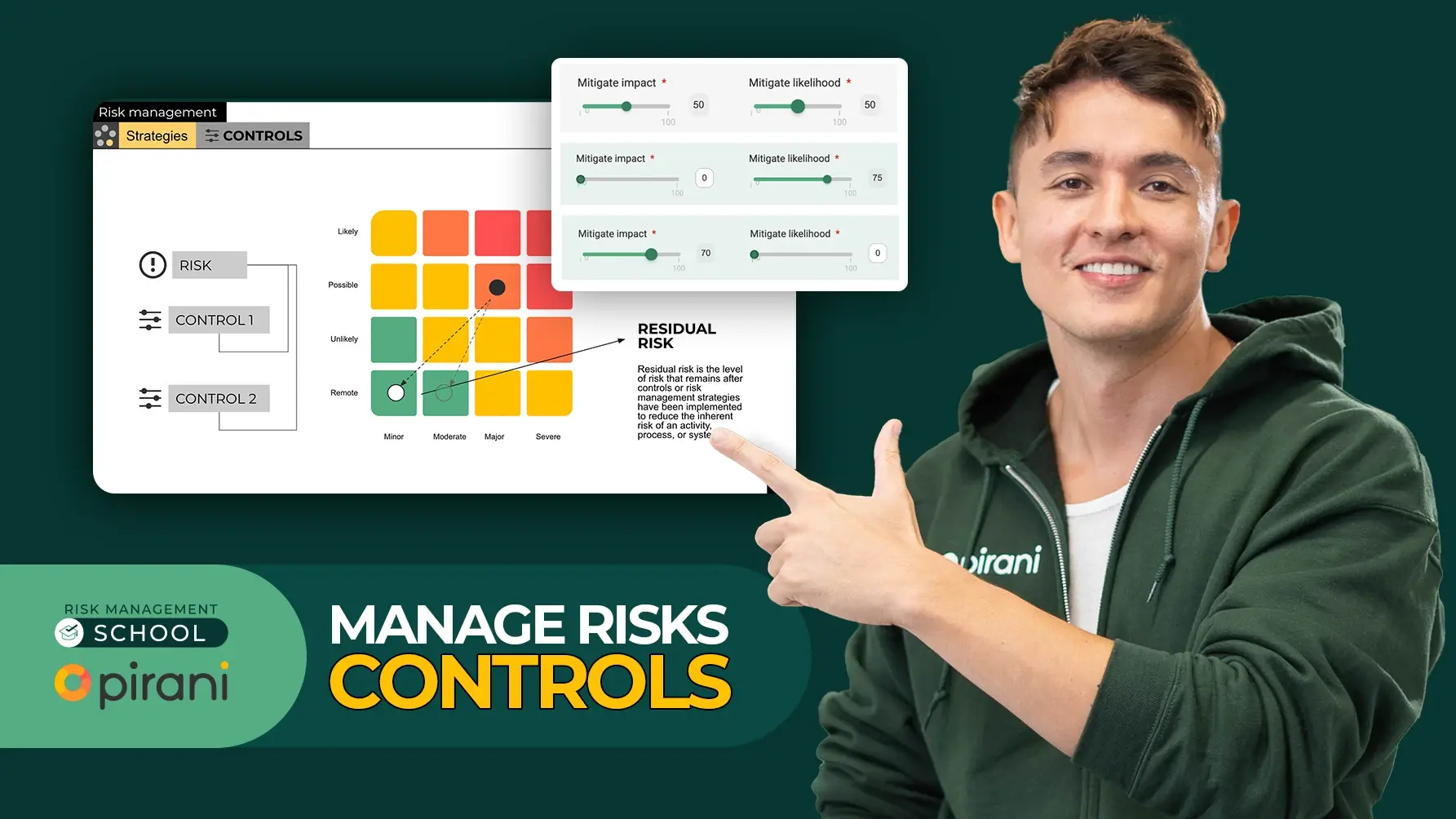AI Risk Management Framework
by Risk Management School on 25 de August de 2025
Artificial Intelligence is transforming the way organizations manage risk — not as a threat, but as a powerful ally to strengthen resilience and efficiency.
In this free Risk Management School session, Alejandro Orrego (CEO at Pirani) shares practical insights on how to integrate AI into your risk management system to anticipate risks, optimize processes, and build true operational resilience.
AI is not here to replace risk managers. It’s here to make us stronger, faster, and more resilient.
AI that Support Risk Management
Categories of AI use in risk management:
- Data Analysis & Predictive Models: anomaly detection, fraud prevention.
- Natural Language Processing (NLP): scanning regulations, analyzing incident reports.
- Automation & Decision Support: automating repetitive tasks, enhancing workflows.
Risks of using AI in Risk Management
Key AI-Related Risks
1. Bias in Models
- Hidden bias in data
- Unfair outcomes
2. Data Privacy & Regulation
- Sensitive data misuse
- Compliance breaches
3. Model Drift & Explainability
- Accuracy degrades over time
- “Black box” decisions
4. Over-Reliance on Automation
- Blind trust in AI
- Weak human oversight
There is an AI Risk Management Framework
MIT AI Risk Repository
The risks posed by Artificial Intelligence (AI) are of considerable concern to academics, auditors, policymakers, AI companies, and the public. However, a lack of shared understanding of AI risks can impede our ability to comprehensively discuss, research, and react to them. This paper addresses this gap by creating an AI Risk Repository to serve as a common frame of reference.
- Read full report on ArXiv
93 pages Paper - Visit the website: airisk.mit.edu
Frameworks of AI risk aim to synthesize knowledge on AI risks across academia and industry, and identify common themes and gaps in our understanding of AI risks.
ISO/IEC 42001AI Management System Standard
- ISO/IEC 42001:2023 is the world's First international standard for Artificial Intelligence Management Systems (AIMS). (published Dec 2023).
- It provides a comprehensive set of requirements and guidance for organizations to establish, implement, maintain, and continually improve processes governing the responsible development and use of AI systems.
- Its aim is to foster ethical, secure, and transparent deployment of AI technologies within organizational processes.
Key Features and Purpose
- Structured AI Governance: ISO 42001 sets out a framework for managing risks and opportunities associated with AI, balancing innovation with governance. It helps organizations design, develop, and deploy AI technologies in alignment with ethical principles and regulatory requirements.
- Lifecycle Coverage: The standard covers all stages of the AI system lifecycle—from conception and development through deployment and ongoing operation—addressing issues such as transparency, accountability, bias mitigation, data protection, and continual improvement.
You May Also Like
These Related Stories

How to identify emergent risks

[class #3] How to create effective risk management controls



No Comments Yet
Let us know what you think